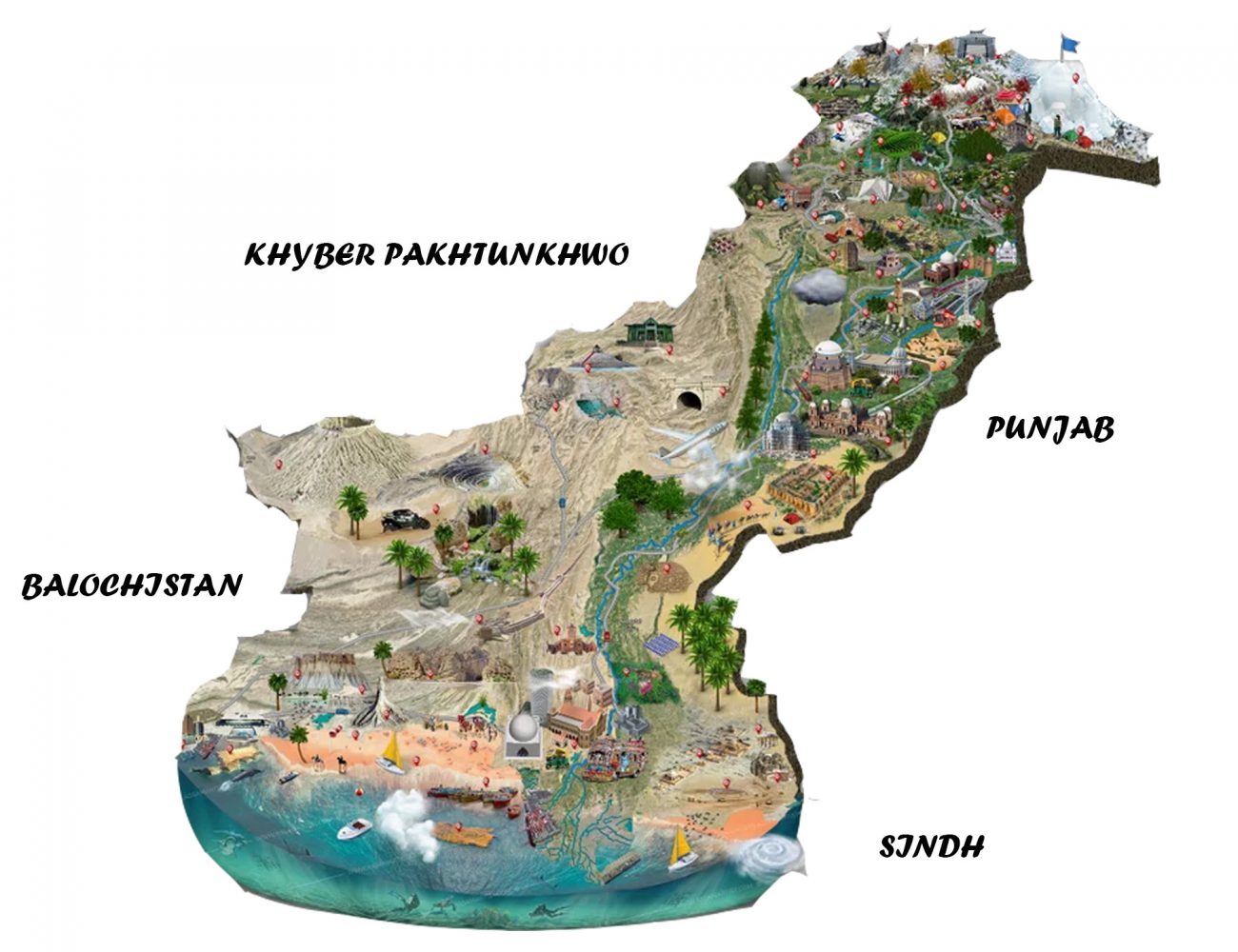Greetings!
Welcome to our Young Artists Virtual Gallery.
Please click on “Enter Gallery” to view each creation contributing to our collection “Sohni Dharti”.
A kind request, please rate and review to build up the excitement.

PAKISTAN
A virtual guide to the Islamic Republic of Pakistan, a country in South Asia with a coastline on the Arabian Sea in south. Pakistan is bordered by Afghanistan, China, India, and Iran.
Within Pakistan’s landscape there is the flat fertile Indus plain in east, nurtured by the Indus, the country’s longest river and a key water resource. Pakistan’s north is mountainous. The nation’s highest mountains are in the Himalayas in north east. Pakistan’s largest and least populated province is Balochistan situated on the Balochistan Plateau in the south and west.
Pakistan has a population of 188 million people (data from Statistics Division, 2015).
Capital is Islamabad. Main port, largest city and business capital of Pakistan is Karachi, second largest city is Lahore. Other major Pakistani cities: Faisalabad, Rawalpindi, Multan, Gujranwala, Hyderabad, Peshawar, and Quetta.
Spoken languages are Urdu, English, Punjabi, Sindhi, Balochi, and Pashto.

SINDH (PROVINCE)
Sindh, the gift of the River Indus , is the southernmost and second largest province of Pakistan. Also called Babul Islam, it boasts of the remnants of the famed Indus Valley Civilization.
Cotton, rice, wheat and sugarcane are the main crops produced in Sindh. Rice is by far the most important crop cultivated here.
The waters around Karachi are rich with seafood and are deemed to be some of the best fishing spots in the world. Surmai, pomphret, lobsters, shrimps, sharks, dolphins, crocodiles and other aquatic life especially Pallas exists abundantly in the sea as well as in the sweet waters of the Indus, Manchar, Keenjhar, Haleji and other lakes.
Sindh has traditionally been celebrated for its wildlife heritage. Its Kirthar National Park, about 70 k.m. of North West of Karachi, is enlisted on World Heritage. Other sites at Haleji Lake and Thar area are also of paramount importance.
Sindh also has a reputation for textiles, pottery, leatherwork, carpets and other crafts. The artisanship of the people of Sindh began during the period of Moenjodaro civilization. The province’s polished ornaments and articles of apparel made out of muslin and wooden lacquer work are highly sought locally as well as globally.

PUNJAB (PROVINCE)
Punjab is Pakistan’s most populous province. It is also the world’s fifth-most populous subnational entity, and the most populous outside China or India.
Punjab has been inhabited since ancient times. The Indus Valley Civilization, dating to 2600 BCE, was first discovered at Harappa. It features heavily in the Mahabharata, and is home to Taxila, site of what is considered by many to be the oldest university in the world.
The province was formed when the Punjab province of British India was divided along religious boundaries in 1947 by the Radcliffe Line after Partition.
Punjab is Pakistan’s most industrialized province with the industrial sector making up 24% of the province’s gross domestic product. It has been strongly influenced by Sufism, with numerous Sufi shrines spread across Punjab which attract millions of devotees annually. The founder of the Sikh faith, Guru Nanak, was born in the Punjab town of Nankana Sahib near Lahore. Punjab is also the site of the Katasraj Temple. Several UNESCO World Heritage Sites are located in Punjab, including the Shalimar Gardens, the Lahore Fort, the archaeological excavations at Taxila, and the Rohtas Fort.

BALOCHISTAN (PROVINCE)
Balochistan, Pakistan’s largest province in terms of land area, and yet the least populated one, is home to rugged mountains, lush waterfalls and many other landscapes. Lake lovers have the Hannah lake to venture to, while Hingol National park, Kund Malir Beach, and Astola Island beckon to those with a penchant for natural beauty. It also houses the Quaid e Azam residency in Ziarat.
A province that is rich in exhaustible and renewable resources, it is the second major supplier of natural gas in Pakistan. In its upper highlands, Balochistan’s climes are characterized by very cold winters and hot summer; while in the lower highlands, winters vary from extremely cold in northern districts Ziarat, Quetta, Kalat, Muslim Baagh and Khanozai to milder conditions closer to the Makran coast.
The people here were growing cotton and making pottery. Before the birth of Isa A.S, it had commerce and trade links with ancient civilization of Babylon through Iran and into the valleys of Tigris and Euphrates.
Balochistan has a vibrant culture. Its folk art, festivals, handicrafts and regional garbs are a sight to behold.

KHYBER PaKHTUNKHWA (PROVINCE)
Khyber Pakhtunkhwa is the third-largest province of Pakistan by the size of both population and economy, though it is geographically the smallest of four. Khyber Pakhtunkhwa is located in the north-west region of Pakistan. It is known as the tourist hotspot for adventurers and explorers. The province has a varied landscape ranging from rugged mountains, valleys, hills and dense agricultural farms. The region is well known for its ancestral roots.
There is the Kalash Valley, which is home to one of the most vibrant indigenous communities of the country. There are also many breathtakingly beautiful lakes such as Lulusar, Kandol and Saiful Mulook; as well as amazing valleys such Kalam, Kumrat, Swat and Kaghan.
The province is the site of the ancient kingdom Gandhara, including the ruins of its capital Pushkalavati near modern-day Charsadda. Once a stronghold of Buddhism, the history of the region was characterized by frequent invasions by various empires due to its geographical proximity to the Khyber Pass.

